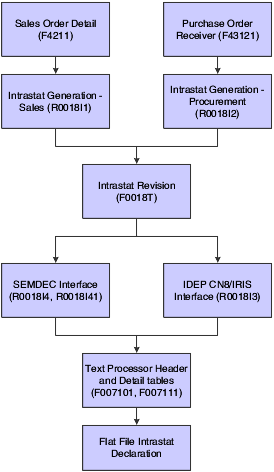Intrastat Requirements
Customs formalities and controls at the internal borders between member states of the EU disappeared in 1993 with the creation of the single European market. With the elimination of custom formalities, the traditional systems for collecting statistics on trade between EU member states also disappeared.
Detailed statistical information regarding merchandise trade between members of the EU is important for market research and sector analysis. To maintain the statistics on trade between EU members, the statistical office of the EU and the statistical departments of member countries developed the Intrastat system.
In compliance with the Intrastat system, information on intraunion trade is collected directly from businesses. Periodically, businesses are required to send a statistical declaration or, in some member states, a combined statistical and fiscal declaration that gives detailed information regarding their intraunion trade operations of the previous period. The frequency with which you are required to submit these declarations depends on national requirements.
The major features of the Intrastat system are common in all member states, but the system can take national specifications into account. If you do business in a country that belongs to the EU and you use the JD Edwards EnterpriseOne Sales Order Management and JD Edwards EnterpriseOne Procurement systems, you can extract all of the information that is necessary to meet Intrastat reporting requirements.
The information that is tracked by the Intrastat system is based strictly on the actual physical movement of goods between member countries of the EU. Intrastat information does not apply to the movement of monetary amounts or the placement of orders between member countries.
This flowchart illustrates the Intrastat reporting process:

JD Edwards EnterpriseOne software does not provide country-specific Intrastat reports.